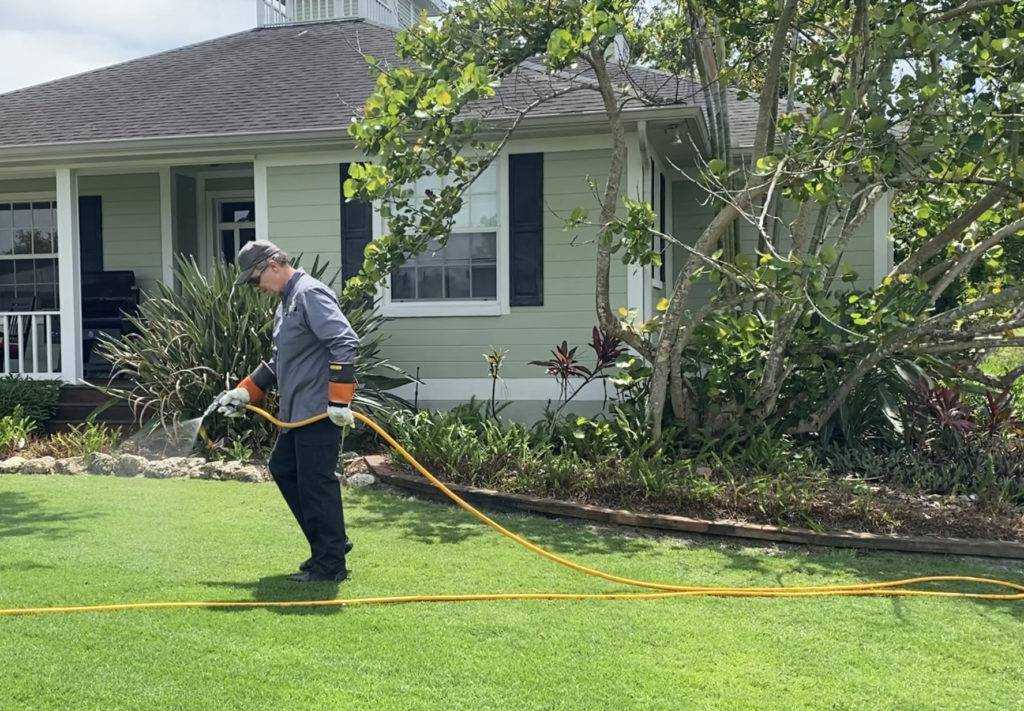Florida's Fire Ant Pest Control - Bug Off Pest is here to Help
The first thought that comes to mind just thinking about these horribly painful fire ants is, OUCH! Their sting is unforgettable, and definitely leaves an everlasting impression, such as avoid at all costs! Their toxic venom causes a burning sensation, hence the name fire ants. My grandmother on the other hand called them, “little red devils from hell”. Many may just agree with her. At a closer look, they are not from hell, but from somewhere other than America. Yes, this is an imported pest.
Here are a few interesting facts from Bug OFF Pest about the fire ant. For starters, they are, as stated, an imported pest, a non-native species to Florida. The red imported Solenopsis invicta, known as the fire ant, actually came to America in the 1930s. These red imported fire ants made their way to the U.S. from Argentina, via the port of Mobile, Alabama. Thanks, Argentina!
In the U.S., we have four native species of fire ants:
- Solenopsis xyloni – southern fire ants
- Solenopsis aurea – desert fire ants
- Solenopsis amblychila – desert fire ants
- Solenopsis geminata – tropical fire ants
A fire ant mound is an important part of a fire ant nest, however, it is not always seen. It can look like a raised mound of aerated dirt, which is nothing more than the displaced soil from the ants digging tunnels underground. Because fire ants need a lot of moisture to work and survive, you will usually see their mounds grow and multiply after a rainstorm. One key aspect that differentiates fire ant mounds is that they do not have a hole in the center, like with most other ant mounds; very deceiving. You also won’t see many, if any, actual fire ants around an undisturbed mound. This is because the ants do not exit the colony through the mound but through underground tunnels connected to it. This is why people can mistakenly step into or disturb a fire ant mound, and then are utterly shocked and caught completely off guard by the hundreds or thousands of ants that come angrily rushing out.
A fire ant mound contains the eggs and larvae of the growing colony, along with countless worker ants. If you have not experienced such an attack, trust me when I say, “You do not want to”. Call Bug OFF Pest to stop the spread of these attacking and painful biting ants.
The worst thing you could do to a fire ant mound is to step in it accidentally. Be cautious when walking around outdoors, especially in open sunny areas, which fire ants prefer; almost anywhere in Florida. Fire ants will defend their nest aggressively, emerging in masses and stinging the offending perpetrator; like your feet. OUCH!
If you happened to have gotten stung, wash the area with soap and water. Although itchy and painful, the stings are otherwise harmless for most people and fade away within a week or so. However, some people, develop allergic reactions to fire ant venom. If you see any of the following symptoms, seek medical attention immediately:
- Difficulty breathing.
- Sweating.
- Chest pain.
- Nausea/vomiting.
- Dizziness.
- Swollen tongue.
- Low blood pressure.
CDC: https://www.cdc.gov/niosh/topics/insects/fireants.html
It is very important to establish a relationship with a local pest control company experienced in dealing with fire ants such as Bug OFF Pest. Bug OFF Pest will fight to rid your home and lawn of these little devils, to ensure your family’s safety. Check out their link on Bugs and Florida fire ants… https://bugoffpest.net/what-type-of-pests-might-be-in-my-home/
Here is a bit more information on the fire ant colony from researchers at the University of Georgia http://magazine.pctonline.com/article/april-2020/entomologists-uncover-florida-fire-ant-matriarchy.aspx
Do not hesitate to call Bug OFF Pest if you have a fire ant issue or even suspect you do. If you have been bitten once, believe me, there are thousands more underground. Many times in Florida, mounds are not seen as depicted in the mound photo. Bug OFF Pest will be happy to conduct a FREE assessment of your property today. Keep you, your family, friends, visitors, workers, or renters safe. Bug OFF Pest works hard to keep Florida safe and fun!







